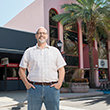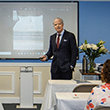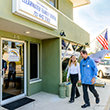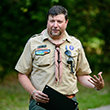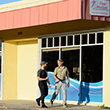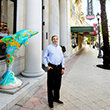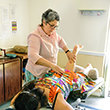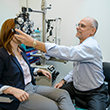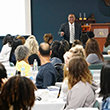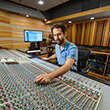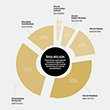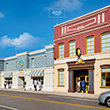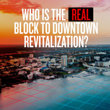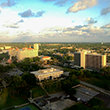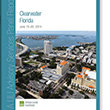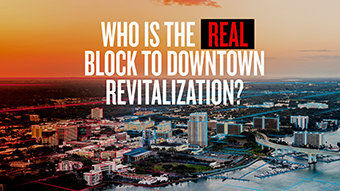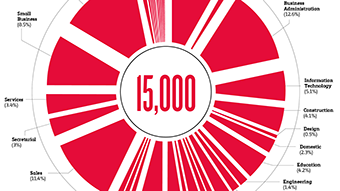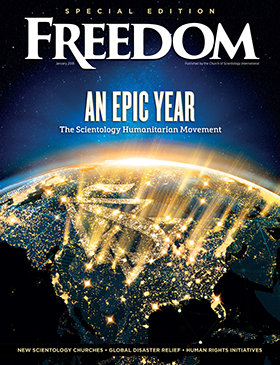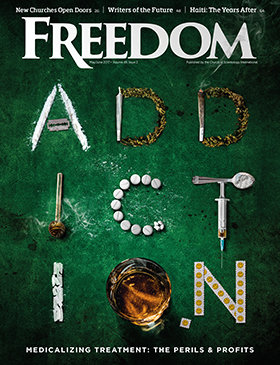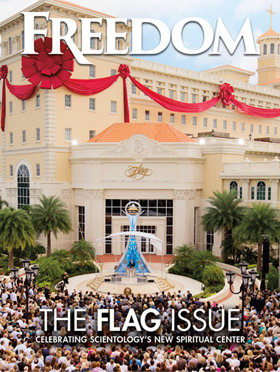Five years ago, FSU economists determined the Church of Scientology generates $1 billion annual impact into the local economy. What does that mean?
In the jargon of urban development, the Church of Scientology is accorded a very rare status: “anchor institution.” Like a few other local entities—MacDill Air Force Base and University of South Florida—anchor institutions offer incredible advantages to a community. In addition to economic impact, it includes cultural and civic advantages. The Church provides all of those to benefit the City of Clearwater, its spiritual home since 1975.
Such participation and economic contribution can be measured in concrete terms. In 2014 a team of Florida State University economists, led by Julie Harrington, director of the Center for Economic Forecasting and Analysis, scrutinized the Church’s financial reports (publicly available data), conducted interviews, surveys and much more. The team’s findings found the Church’s economic impact in Clearwater to be a big positive for every Clearwater citizen. The Church’s impact on the Tampa Bay Area, according to the report, was just shy of $917 million a year. That’s almost $1 billion into the hands of business owners and contractors, restaurant servers and technocrats, small shop owners and aspiring tycoons.
FSU economists examined massive amounts of financial records, including surveys and interviews, to quantify the impact of the Church of Scientology and its members in Clearwater, Florida.

Since it first acquired two historic structures in 1975—including the landmark Fort Harrison Hotel—the Church’s campus has expanded to more than 50 buildings, most in downtown with support facilities elsewhere in the city.

Yet another look at the impact is the taxes paid by the Church. The Church pays property tax and tourist tax on its religious retreat residential and dining facilities. The total of such taxes paid in 2013 was $1.8 million. By 2018 this jumped to $3.1 million.
By 2013, the Church had built, purchased and renovated 1.9 million square feet of space—that includes the 377,000-square-foot Flag Building. The FSU economists’ calculation of direct capital outlay and construction impact from 2007 to 2013 was $282 million, most of which went to local contractors and construction workers.
Among the properties renovated, restored or constructed were the Oak Cove and Fort Harrison religious retreats and the Flag Building. The increased capabilities of Flag in turn has drawn more Scientologists to Clearwater: some 27,000 Scientologists—15,000 of whom are now residents of Clearwater and neighboring towns, and others who travel from distant states and lands to receive religious services and education.
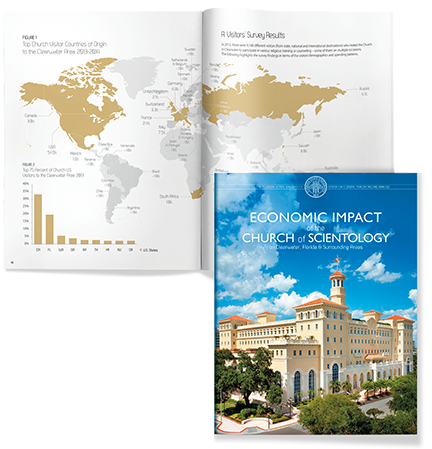
Along with economic impact has come cultural and civic advantage. Church facilities are also open to nonprofit and charitable institutions around Tampa Bay to use to further their own benevolent causes. Among the Scientologists that have moved to Clearwater over the decades is an enviable number of artists—a dimension that is hard to quantify but nonetheless adds vital depth and texture to a community.
And then there are the nonprofit humanitarian organizations supported by the Church. Now headquartered in downtown facilities purchased and renovated for this purpose, their volunteers rush to help in disaster zones, fight drugs and human trafficking, and much, much more.
What are the economics of that? The Church of Scientology had a $916,692,624 impact in 2013 on Clearwater and the surrounding region. The impact that was detailed in the study spreads out into the community in numerous ways:
- Creating some 7,514 jobs, each with an average annual income of about $45,000.
- Direct spending on goods and services for Church operations of $54,500,785.
- Businesses owned or operated by Scientologists had revenues of $288 million—money that is used to hire employees and purchase materials and expertise.
- Scientologists annually contributed $87,867,000 to charitable endeavors, uplifting the quality of life in Clearwater.
- Church residents spent $100,344,512 annually on housing, $57,906,206 on household expenses and $39,544,304 on shopping.
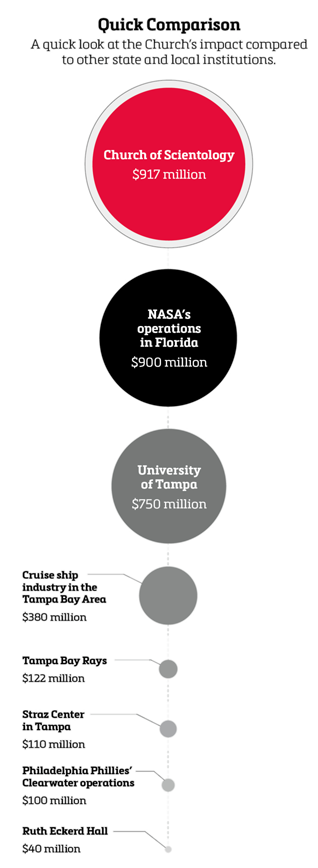
KEEPING THE NUMBERS STRAIGHT
How did the Church’s economic impact compare with other local institutions in 2013?
On the smaller side, the Philadelphia Phillies’ spring training operation in Clearwater had an impact of about $100 million.
Ruth Eckerd Hall’s impact was $40 million.
The Church’s impact exceeded such entities as the Tampa Bay Rays baseball team ($122 million), the Tampa cruise ship industry ($380 million) and the University of Tampa ($750 million). The impact of NASA’s Florida operations was computed at $900 million.
Studies that show how a city or region performs are enlightening. For example, tourism accounts for about $6 billion in impact to Tampa and Hillsborough County. Clearwater Beach has an impact of $1.5 billion a year.
But especially with entities that are seeking public financing—economic impact numbers can be highly inventive. Typically, promoters cite the “multiplier” impact—how every dollar spent directly creates additional dollars of indirect spending down the economic food chain. Those multipliers are often as much as three times direct spending—and sensible economists disregard such exaggerations.
When the Church of Scientology retained FSU economists to do its 2013 economic impact analysis, Church officials mandated a conservative calculation on indirect spending. Thus, the ratio of direct and indirect spending is less than 1:1—meaning the $1 billion the Church pours into the local economy is a reliable, solid calculation.















